

nysascd Announcement!
nysascd
Executive Board 2024-2025
President
Mark Secaur
Smithtown CSD
President-Elect
Matthew Younghans
Clarkstown CSD
Immediate Past-President
Mary Loesing
Connetquot CSD (retired)/Science Consultant
Vice President for Communications and Affiliate Relations
Amanda Zullo
Saint Regis Falls CSD
Treasurer
Deborah Hoeft
Young Women’s College Prep
Secretary
Marcia Ranieri
Capital District, RBERN
Ex-officio NYS Education Department
Santosha Oliver
Assistant Commissioner, Office of Standards and Instruction
Executive Director
Brian Kesel
nysascd.director@gmail.com nysascd.org
Board Members
Brenda Aull-Klaben
Cayuga Onondaga Teacher Center
Gregory Borman
NYC Department of Education
Lisa B. Brosnick
Buffalo State
Jill Christian-Lynch
Jamesville-DeWitt/Syracuse University
Teacher Center
Ted Fulton Hicksville CSD
Martha Group
Vernon Verona Sherrill CSD
Eric Larison
Solvay UFSD (retired)
LaQuita Outlaw
Bay Shore UFSD
Krissy Purcell
Central NY/Oswego County Teacher Center
impact On Instructional Improvement
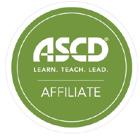
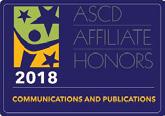
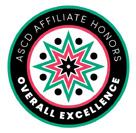
Published by: NYSASCD PO Box 282 Camillus, NY 13031 nyascd.director@gmail.com
Editor - IMPACT
LaQuita Outlaw, Ed.D. nyascd.director@gmail.com
Design & Digital Publication: CatStone Press (434) 960-0036 catstonepress.com@gmail.com
Publication Statement
Impact on Instructional Improvement is the official journal of NYSASCD. Membership in NYSASCD includes a subscription to Impact and the newsletter, NYSASCD Developments. The views expressed or implied in the articles in this publication are not necessarily official positions of NYSASCD or the editor.

LaQuita Outlaw, Ed.D. has worked in school leadership for over a decade. Dr. Outlaw serves as a peer editor for Corwin Press and assists several local organizations with organizing professional development opportunities for educators across Long Island.
Beyond the Hype – Deepening Learning in the Age of Cognition and AI
In an era where both education and technology are evolving at dizzying speeds, the authors in this publication offer you an opportunity to rethink not what we do, but how and why we do it. These three thoughts focus on the ideas that meaningful learning depends on connections—cognitive, emotional, social, and now, increasingly, technological.
First, we look at a deeply human lens on innovation. Dueck reminds us that every breakthrough—cars, cell phones, now GenAI—once seemed foreign. What matters most is not resisting the wave, but riding it with purpose. Take a look at practical frameworks that balance the use of AI and promote a refreshed sense of agency.
We shift into the emergence of generative AI in schools. Winnick shares a clear message - AI isn’t the enemy; exhaustion is. Rather than adding another initiative to a teacher’s already-full plate, advocate for embedding AI into good teaching, with intentionality and reflection. You’ll learn how AI can enhance differentiation, student agency, and improve authentic writing. The important step is to stay focused on thinking, not just the tools.
Then, you’ll dive into cognitive science, where classroomready “neuro-moves” like context and social interaction aren’t just brain-friendly—they’re foundational. The authors remind us that deep learning isn’t about compliance, but about designing instruction that aligns with how the brain naturally learns.
Finally, take a peek at our Whole Child Award winner - Algonquin Middle School. Their approach to building a culture committed to helping every student grow academically, socially, and emotionally is astounding. You are sure to find an idea or two you can use in your own school district.
We are excited about what you will learn as you peruse this publication. The future of education is not just about keeping up with change—it’s about shaping it.
nysascd
Mission Statement
NYSASCD aims to assist educators in the development and delivery of quality instructional programs and supervisory practices to maximize success for all learners.
If you aren’t already a member please consider joining New York ASCD or suggesting that a colleague join for only $55.00 annually.
As a member of NYASCD you will receive our on-line newsletter, NYSASCD DEVELOPMENTS, as well as our on-line journal, Impact and discounts for all of our professional development activities. Complete information about NYSASCD may be found on our website. This website gives you information about our organization, professional development activities, information about affiliates across the state, and links to other professional organizations and resources.
Finding Resilience On A Dusty Road: Three Tools to Help Navigate
Myron Dueck
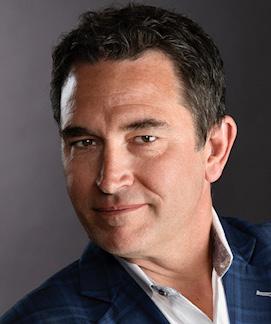
Myron Dueck frequently visits schools, conferences and districts around the world to share his 25 years of practitioner and leadership experience. He helps educators generate ideas and navigate issues surrounding grading, assessment, reporting, student voice and generative AI.
Myron’s published work includes numerous journal articles and his best-selling books, Grading Smarter, Not Harder–Assessment Strategies that Motivate Kids and Help Them Learn (ASCD, 2014) and Giving Students a Say! Smarter Assessment Practices to Empower and Engage.
I heard an oh-so-true adage recently: “When an elderly person dies, a library burns down.” That’s very true of my grandmother.
With no such thing as “day-care” in our tiny town, my brother and I were often nurtured under the GREAT system –Grandma’s Recipes, Encouragement, Advice & Traditions. She was a deep well of support, kindness, and wisdom—what teen doesn’t need a good dose of that trifecta?
Fast forward to my thirties, and I’m a dad of two toddlers. By that time, my grandma was in her 90s, and I realized that my own kids likely wouldn’t get to know her during their most formative teenage years. That’s when I had an epiphany.
I arranged for an entire afternoon to visit my grandma at her assisted-living care home. I arrived with a camera, microphone, and too many questions. We spent hours drifting through a lifetime of stories. Over the next few months, I edited her stories into a 90-minute video. A decade later, my teenage kids met a whole new side of their grandma…on a LED TV.
It was astounding to hear her talk of the changes in technology throughout her life. One of our favorite stories is
her account of seeing the first automobiles arrive in her rural farming community. She laughed as she recalled running to the horse fence and shouting to her siblings, “Hurry, hurry, a car is coming!” Still chuckling, she continued, “We would wave and wave until it was gone.” Then, in a hushed tone, she concluded, “It was kind of pathetic.”
With the emergence of Generative Artificial Intelligence (GenAI), and considering the chat with Grandma, I’m reminded of an inescapable reality surrounding innovation and time. My grandma remembered a time with no cars, but I’ve taken them for granted. I recall a time before cell phones, but my kids have grown up with them. Everyone reading this article will remember a time before GenAI, but it won’t be long before we have a generation of students who’ve always had it. Whether it’s cars, cell phones or GenAI, with each new technology, once it becomes the norm, we might reflect on our first reactions with a degree of contrition.
I first saw ChatGPT in February of 2023 at an ed-tech event, and I was mesmerized. It generated responses to whatever prompts we could conjure. With wonder and trepidation, attendees pondered what impact this technology might have on education. What would it mean for homework, assignments, and learning in general? As I drove home, my mental playlist included the Beatles belting, “Help!” and a strange “SOS” compilation
by the Police and Rihanna. I got home and showed ChatGPT to my family. “Look at this!” I exclaimed. I was waving at the first car.
In their book, “Resilience – The Science of Mastering Life’s Greatest Challenges,” Charney and Southwick (2012) explore the traits common to people who have endured incredible challenges such as war, assaults, and disasters. They examine people who not only survived but thrived. They argue that we can train our brains to become more resilient, and a few suggestions include:
• Keeping a positive attitude by recognizing areas that you can control
• Reframing stressors to realize that struggles are essential for growth
• Building self-esteem by facing challenges and fears
These three suggestions can probably help us navigate the uncertainties and impacts of GenAI on the world of education. The remainder of this article will explore three specific tools or ideas that have helped me feel a greater sense of control while reframing my stressors and fears. I suppose they’ve acted as a GenAI life-preserver for me recently— perhaps they will for you also.
A guide to a more productive conversation
Too much of the edu-speak around GenAI has centered on “suspect, detect,
prosecute.” When GenAI hit the mainstream in 2023, teachers rightfully feared that many students would use it to plagiarize. Educators were drawn to digital tools that promised to detect if the material was generated by AI, and then the full arm of the discipline system could befall the student.
First off, attempting to grade evidence of learning done outside the classroom has been rife with problems long before the emergence of GenAI. Back in 2014, I devoted an entire chapter of Grading Smarter Not Harder (Dueck) to the problems of grading homework and offered practical solutions for teachers interested in shifting their
hoping that some piece of technology will counter the misguided use of GenAI, I think we are, in my grandma’s lingo, “barking up the wrong tree.” The GenAI genie is “out of the bottle” and as argued earlier, soon students will always have used it. A progressive conversation is needed.
Enter the “AI Assessment Scale Revisited: A Framework for Educational Assessment” (Perkins, Roe & Furze, 2024). This incredibly timely and practical framework shifts the GenAI conversation from “suspect, detect, prosecute” to what level of AI use makes the most sense in each educational situation. The
Perhaps GenAI will finally alter the practices of teachers still insistent on grading compliance assignments when there’s uncertainty as to who
completed
them.
practice. Perhaps GenAI will finally alter the practices of teachers still insistent on grading compliance assignments when there’s uncertainty as to who completed them.
Secondly, the programs claiming to detect the use of AI are themselves…suspect. I personally sampled three of the leading programs that claimed to determine if writing was human or AI, and I cancelled each subscription. They were woefully inaccurate.
Whether it’s suspecting plagiarism or
five levels of the scale range from using “No AI” to “AI Exploration” intended to be used by students with their teachers. The framework largely speaks for itself (see Figure 1 on the following page).
Further, the authors transform the table seen in Figure 1 to one that is circular (See Figure 2). By altering the shape, any sense of hierarchy is eliminated. There is not a better or worse use of GenAI, but rather it depends on the situation and the learning intentions of the exercise.
ure 1
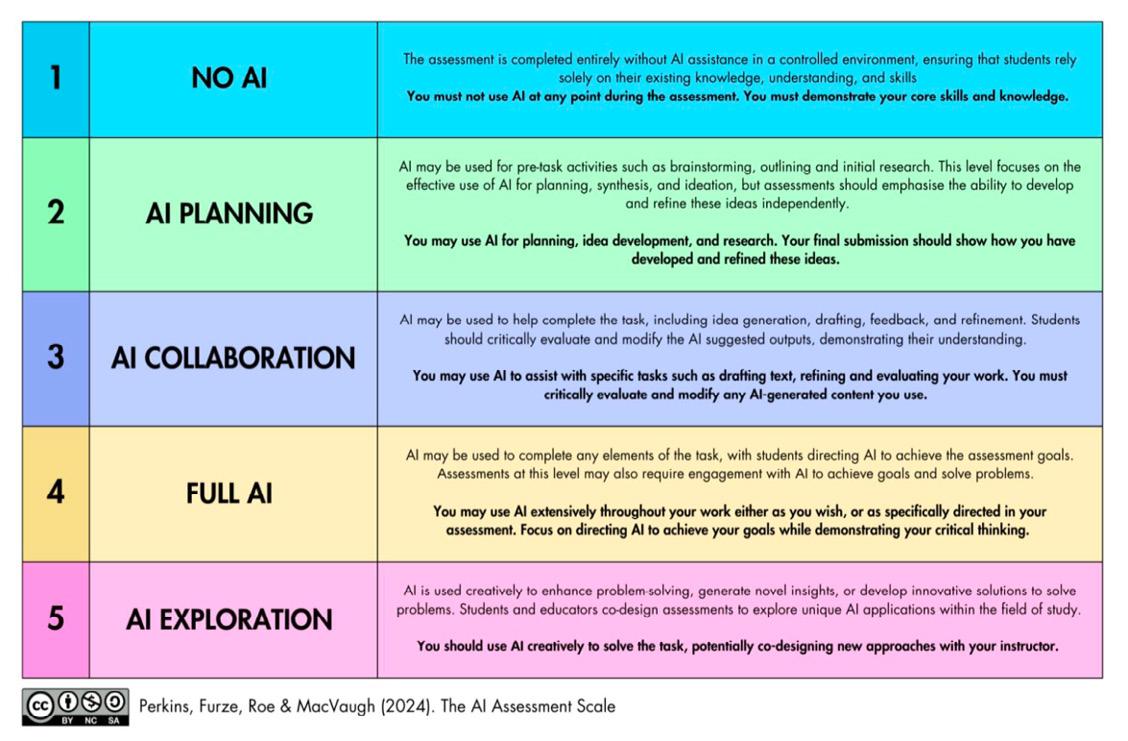
Further, the authors that is circular (See Figure 2). By eliminated. There not a better or worse use of GenAI, but rather it depends on the situation and the learning intentions of the exercise.
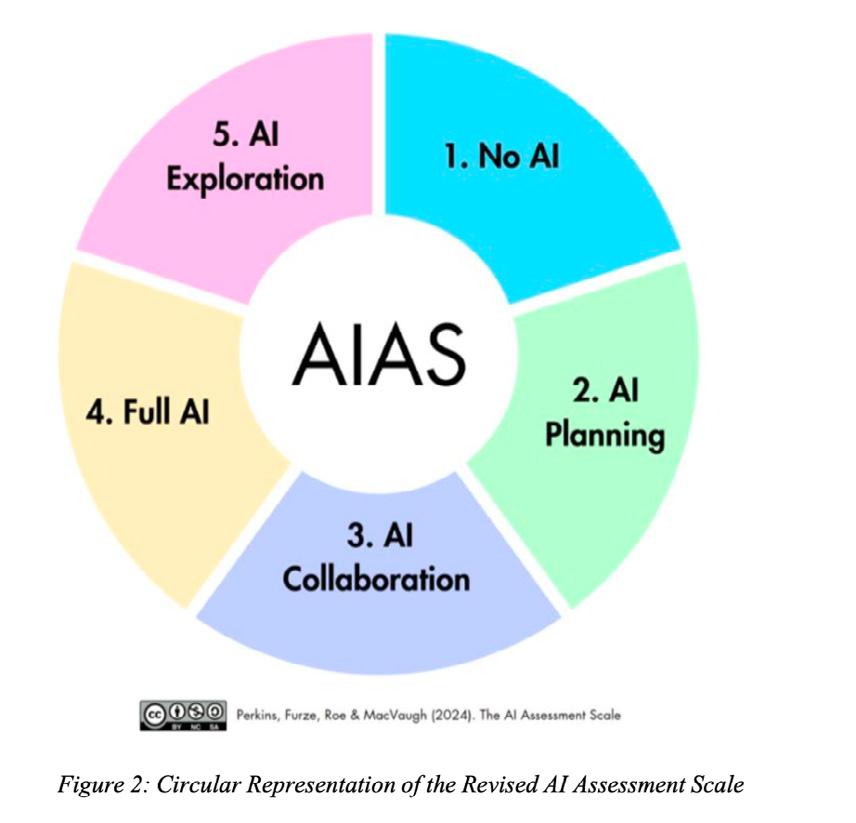
FIGURE 1: The AI Assessment Scale
FIGURE 2: Circular representation of the Revised AI Assessment Scale
This framework has the potential to truly shift the paradigm. With schools I’ve visited recently, we are exploring the idea of sharing this circle with our students and having an ongoing, productive conversation around the appropriate use of AI for each activity. To assist both teachers and students in this shift, we are considering labelling each assignment with the
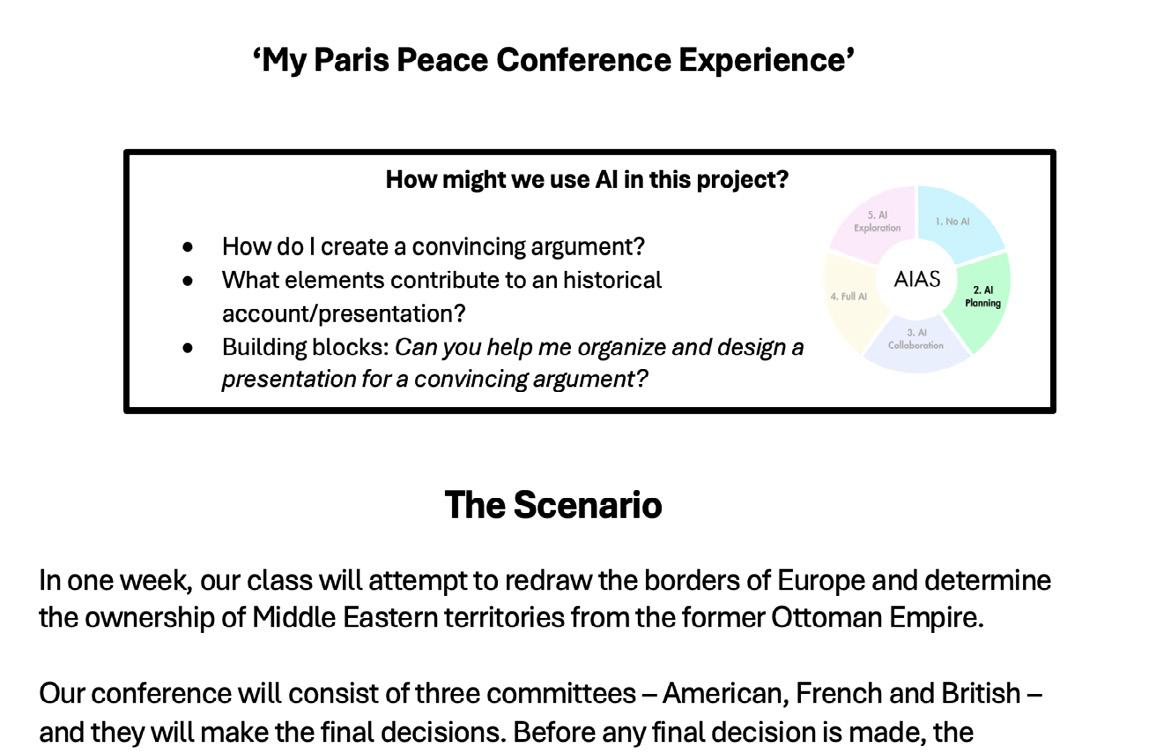
Notice the textbox and AIAS circle logo at the very start of the assignment, clearly addressing the potential uses of AI.
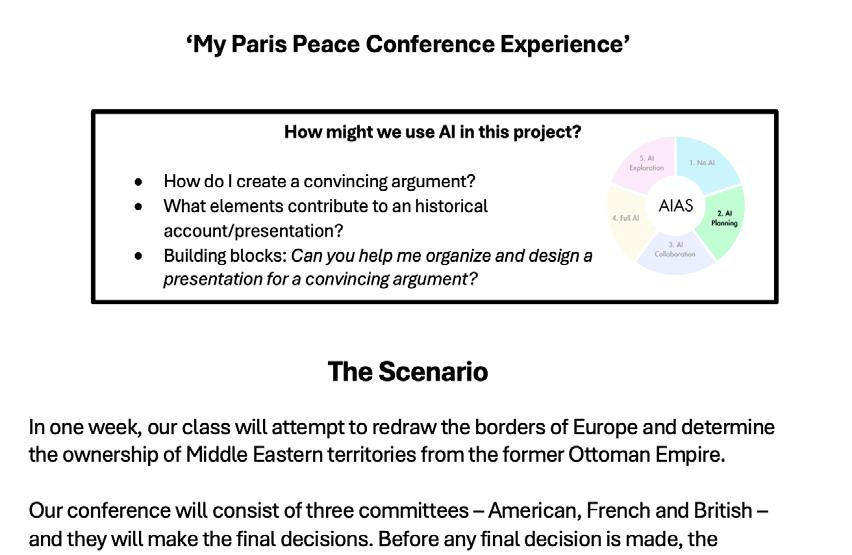
Notice the textbox and AIAS circle logo at the very start of the assignment, clearly addressing the potential uses of AI.
I have made five images, each one isolating one of the segments of the AIAS circle. These circles are available as both a .pdf and a .jpeg file as seen below and are available by accessing the URL link provided.
I have made five images, each one isolating one of the segments of the AIAS circle. These circles are available as both a .pdf and a .jpeg file as seen below,
Notice the textbox and AIAS circle logo at the very start of the assignment, clearly addressing the potential uses of AI. I have made five images, each one isolating one of the segments of the AIAS circle. These circles are available as both a .pdf and a .jpeg file as seen below, and are available at this dropbox link.
Notice the textbox and AIAS circle logo at the very start of the assignment, clearly addressing
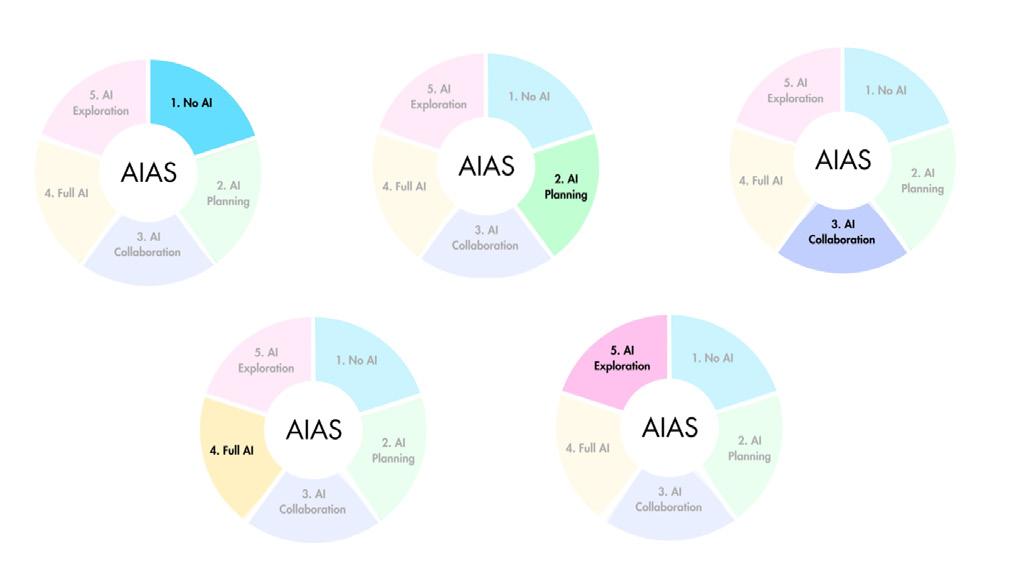
I have made AIAS circle. These below, and are
What skills should we develop, and why?
With the proliferation of information technology, beginning notably with the printing press, and later encyclopedias, there has been a slide towards information becoming more readily available and less expensive. Following the Britannica salesperson knocking on our door, the phases have become shorter with each tech step: Encarta, Internet, Wikipedia, Google…
We could consider GenAI to be one more giant leap in this direction. As society blends each piece of information technology into the day-to-day, arguably the importance of skills and competencies grows ever larger. If we examine competencies through the lens of GenAI, the pressing question is What skills do we most need to develop now?
A potential key to this enigma was ordered via Amazon. UPS was kind enough to deliver a copy of “Education for the Age of AI” (Fadel, et al, 2024) and personally, it could not have come along at a better time. Besides arguing convincingly that content and conceptual knowledge is more important than ever, the authors offer a research-rich path that could assist educators in focusing on the right skills at this time in history. See the flow chart that I adapted from one shared in the book (Figure 3).
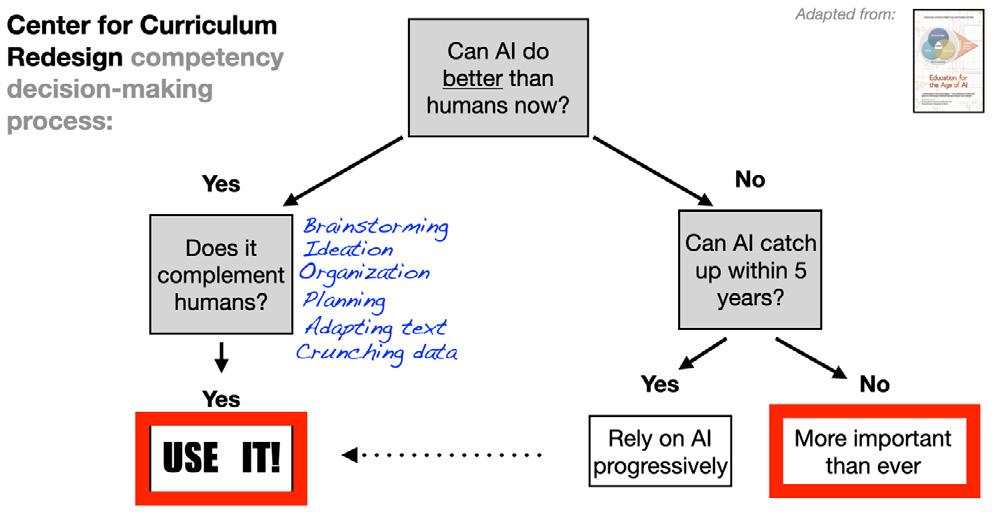
This flow chart presents a map for asking a few critical questions, and can subsequently be of great assistance in figuring out two of the more vexing questions of the GenAI era (Fadel, et al.):
This flow chart presents a map for asking a few critical questions, and can subsequently be of great assistance in figuring out two of the more vexing questions of the GenAI era:
1. How do we design curriculum, lesson plans, assessments and learning
Figure 3
FIGURE 3
• How do we design curriculum, lesson plans, assessments and learning tools?
• How will we deliver student and teacher-led experimentation with AI?
Considering the left side of the flow chart, there is a “green light” for using GenAI when the following scenario exists:
• Can AI do better than humans now? YES
• Does it complement what I’m trying to do? YES
Once we have a “go” on each of these questions, the authors argue that AI should be incorporated as soon as possible, while always filtering for detrimental effects. In short…USE IT!
On the right side of the chart, if AI cannot outperform humans, and especially if it’s not predicted to any time soon, those are the skills more important than ever
A few of the many examples shared in the book include:
On the right side of the chart, if AI cannot outperform humans, and especially if it’s not predicted to any time soon, those are the skills more important than ever. A few of the many examples shared in the book include:
Competency
Subcompetency
Communication Sharing one’s vision and inspiring others
Ethics
Collaboration
Making ethical decisions and standing up for the rights of others
Navigating and resolving interpersonal conflict
Examples/Traits
Empathy
Deep connection to others
Creativity
Authenticity
Navigating community
Emotions
Social understanding
Complex scenarios
Humility
Empathy
Emotional nuances
Complex social interactions
This identification and breakdown of today’s most human-centered skills may be one of the ‘missing links’ for educators looking to design instruction, learning activities and assessments in the GenAI era. Perhaps learning activities that most involve elements such as social interaction, human connectedness, community-based, outdoor experiences, and student agency hold the most promise for the years ahead. Interestingly, many of the best things I ever did in my classroom, long before AI, would have aligned nicely with the competencies highlighted in the book. Examples include role-play exercises, mock historical activities, reflections, classroom debate, and many more.
This identification and breakdown of today’s most human-centered skills may be one of the “missing links” for educators looking to design instruction, learning activities and assessments in the GenAI era. Perhaps learning activities that most involve elements such as social interaction, human connectedness, community-based, outdoor experiences, and student agency hold the most promise for the years ahead. Interestingly, many of the best things I ever did in my classroom, long before AI, would have aligned nicely with the competencies highlighted in the book. Examples include role-play exercises, mock historical activities, reflections, classroom debate, and many more.
3. Using AI to tackle a learning objective.
Using AI to tackle a learning objective.
As mentioned earlier, I first encountered ChatGPT in February of 2023, and I’ve been on a journey of discovery ever since. While there have been successes, in both my district role and as a global consultant, I’ve sensed a common frustration among educators. On one hand, we have instant access to this mind-blowing piece of technology with limitless potential to brainstorm and ideate—not to mention it being tireless and “patient.” On the other hand, the limitless nature of the tool, combined with a feeling of urgency to adopt it, can feel overwhelming.
Whether at conferences or in visiting schools and classrooms, I found that the majority of teachers who dabbled with AI were amazed at its brainstorming potential, but struggled as to how to effectively blend it with their practice. Many teachers may not have a pathway or vision to meaningfully use GenAI to tackle the learning objectives they encounter every day.
Whether at conferences or in visiting schools and classrooms, I found that the majority of teachers who dabbled with AI were amazed at its brainstorming potential, but struggled as to how to effectively blend it with their practice. Many teachers may not have a pathway or vision to meaningfully use GenAI to tackle the learning objectives they encounter every day.
Whether at conferences or in visiting schools and classrooms, I found that the majority of teachers who dabbled with AI were amazed at its brainstorming potential, but struggled as to how to effectively blend it with their practice. Many teachers may not have a pathway or vision to meaningfully use GenAI to tackle the learning objectives they encounter every day.
In response, I developed an eight-step flow chart that provides educators with a tangible, concrete, and replicable set of steps to unpack a learning standard using GenAI. The steps are shown in the following figure:
In response, I developed an eight-step flow chart that provides educators with a tangible, concrete, and replicable set of steps to unpack a learning standard using GenAI. The steps are shown in the following figure:
In response, I developed an eight-step flow chart that provides educators with a tangible, concrete, and replicable set of steps to unpack a learning standard using GenAI. The steps are shown in the following figure:
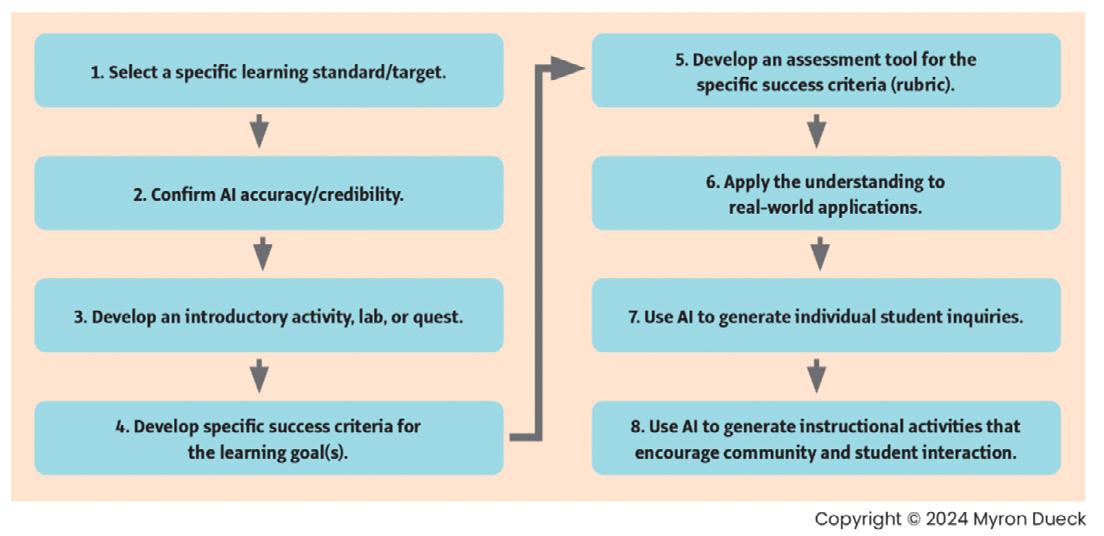
Educational Leadership – ASCD’s flagship monthly periodical has this process and figure highlighted in their February 2025 issue of EL Magazine In the article, I select a specific learning standard and systematically apply the process to unpack the standard and develop interesting and meaningful assessment tools. This type of framework can be used to make teachers’ lives easier and more efficient, while arguably making the students’ experience more engaging. I encourage readers of this article to explore the EL story at this link:
Educational Leadership, ASCD’s flagship monthly periodical, has this process and figure highlighted in their February 2025 issue of EL Magazine. In the article, I select a specific learning standard and systematically apply the process to unpack the standard and develop interesting and meaningful assessment tools. This type of framework can be used to make
https://ascd.org/el/articles/how-to-unpack-a-learning-standard-using-chatgpt
Educational Leadership – ASCD’s flagship monthly periodical has this process and figure highlighted in their February 2025 issue of EL Magazine. In the article, I select a specific learning standard and systematically apply the process to unpack the standard and develop interesting and meaningful assessment tools. This type of framework can be used to make teachers’ lives easier and more efficient, while arguably making the students’ experience more engaging. I
Perhaps the version of resilience I’m most looking for with GenAI is less about “bouncing back” from a difficult experience and more about navigating uncertainty and change.
teachers’ lives easier and more efficient, while arguably making the students’ experience more engaging.
Conclusion
The American Psychological Association defines “resilience” in part as “the process of adapting well in the face of adversity” (2020). GenAI holds enormous potential for the future of education, but with this potential, there sometimes comes a sense of angst. Perhaps the version of resilience I’m most looking for with GenAI is less about “bouncing back” from a difficult experience and more about navigating uncertainty and change.
With the emergence of ChatGPT, and with each subsequent GenAI development, I’m reminded of my grandma, perched on the fence, waving at the first car. I imagine that automobile was kicking up dust on that rural road so differently than the horse and buggy she was accustomed to. There’ll soon come a day when GenAI is as common as cars or phones, and I’m not sure how I’ll look back on my initial reaction to it. Hopefully, with the types of tools shared in this article, I’ll avoid my grandma’s word: pathetic.
REFERENCES
American Psychological Association (2020). Building your resilience. https://www.apa. org/topics/resilience/building-yourresilience
Cohen, Y. (2025). Top 10 Best AI Apps & Websites in 2025. https://www.top10. com/best-lists/best-ai-apps
Dueck, M. (2014). Grading Smarter Not Smarter –Assessment strategies that motivate kids and help them learn. Alexandria, VA: ASCD.
Dueck, M. (2025). How to unpack a learning standard using ChatGPT. Educational Leadership. (82)5.
Fadel, C., Black, A., Slesinski., & Dunn, K. (2024). Education for the Age of AI. Boston, MA: Center for Curriculum Redesign.
Perkins, M., Roe, J., & Furze, L. (2024). The AI Assessment Scale Revisited: A framework for educational assessment.
Southwick, S. M., & Charney, D. S. (2012). Resilience: The science of mastering life’s greatest challenges. Cambridge University Press.
Instructional Innovation Without Initiative Fatigue
Alana Winnick

Alana Winnick is is the Educational Technology Director at Pocantico Hills, a NYSCATE Board Member, and the author and podcast host of The Generative Age. A nationally recognized voice in educational innovation, she was recently named the 2025 SAANYS NYS Digital Leader of the Year, CoSN CTO of the Year, and a 2025 ASCD/ISTE Annual Conference Featured Voice. She founded Students for Innovaation to empower students to advocate for change in their schools. Learn more at AlanaWinnick.com.
We’re living in the era of initiative fatigue. Educators are overwhelmed. Administrators are trying to protect their teams from burnout. And now, just as we start to feel grounded again, here comes artificial intelligence (AI)—something that feels both urgent and completely destabilizing. But what if I told you AI isn’t one more thing? What if, when done right, it helps us do LESS, better?
This isn’t about launching a new program, mandating a new platform, or checking off another PD box. It’s about embedding AI into the good work we’re already doing and using it as a tool to make that work even more intentional, inclusive, and sustainable. I don’t serve AI as a standalone initiative. I sneak it in like vegetables—baked into everything else.
AI Isn’t the Enemy: Exhaustion Is
I don’t serve AI as a standalone initiative. I sneak it in like vegetables—baked into everything else.
Here’s what I’m seeing: students are already using AI, often without guidance. Teachers are scrambling to keep up. Leaders are trying to be thoughtful and avoid adding to initiative overload. But in the absence of clear, intentional support, AI is either being underutilized or misused. Instead of helping teachers
rethink the learning process, we’re leaving them to navigate new challenges without the professional development or time to do it well. And that’s where things start to fall apart.
I recently heard a story about a student who turned in a polished essay—beautifully written, well-structured, with cited sources. But when the teacher tried to verify those sources, they didn’t exist. AI had generated realistic-sounding but completely fake citations. The student didn’t even realize it was an issue: “ChatGPT gave them to me,” he said. This isn’t about catching kids cheating. It’s about what we’re not teaching.
Students are outsourcing their thinking to systems that confidently make things up. Not because they’re lazy, but because we haven’t taught them how to question the tool, reflect on its use, or take ownership of the process. This is a literacy issue, not just a tech issue.
AI Is Already Embedded in Teaching
As educators, we don’t need one more program, we need support to deepen what we’re already doing. AI can quietly show up inside:
• MTSS by generating leveled texts or targeted scaffolds
• UDL by supporting multimodal expression and language translation
• Literacy instruction by guiding feedback loops and revision
• SEL by helping students explore scenarios and perspectives
• Student agency by creating space for reflection, voice, and ownership
One of my favorite ways to frame it for students and teachers is this: When you use AI, you have two jobs. Be a detective and be a DJ.
• Be a detective: Spot bias, check for misinformation, and don’t believe everything it says.
• Be a DJ: Remix what you find, add your voice, and create something new that reflects your own thoughts and ideas.
We assume students know how to use technology just because they were born into it. But they don’t. And it’s our job to teach them how to use it responsibly, critically, and creatively. If we don’t, they won’t learn. And if they don’t learn, they won’t thrive in the world they’re walking into.
AI isn’t just a shortcut or a cheat code, it’s a tool that, when used intentionally, can amplify thinking, but students need to be explicitly taught how to engage with it.
What AI Can Do for the Writing Process
In writing, AI has the power to bring back the thinking we lost when we prioritized final products over process. Your straight-A students—the kind who could perfectly mirror
what a teacher wanted—may not be learning to think; they may just be learning to perform.
When we guide students through writing with AI, the focus shifts. They can use it to:
• Brainstorm ideas and tones
• Draft with support, then critically evaluate that draft
• Revise based on AI feedback, but also decide what advice to ignore
fors during instructional walkthroughs might include:
• Student reflection prompts embedded in writing tasks
• Assignments that can’t be easily outsourced to AI
• Visible thinking, like color-coded drafts or AI usage annotations
• Teacher-designed frameworks for ethical use
We should stop chasing shiny tools... The tech is secondary. The learning is the point.
• Reflect on how they made decisions
• Annotate their writing to show where AI helped and where their voice took over
That metacognitive work is powerful. It transforms AI from a shortcut into a thinking partner. It shifts the focus from the final product to the thought process behind it. And when we prioritize that kind of learning, we help students develop the skills they’ll actually need to succeed beyond our classrooms.
What Should Leaders Be Looking For?
If AI is going to be baked into instruction, we need to know what to look for. It’s not enough to ask, “Is the teacher/student using AI?” A better question is, “Are students doing more thinking than the tool?” Some look-
• Authentic audiences: blogs, podcasts, portfolios, etc.- driving student engagement
We should stop chasing shiny tools and start observing for intentional design. The tech is secondary. The learning is the point.
Rethinking What, Why, and How We Assess
Here’s the best part: AI can actually give teachers time back.
• Time to stop grading every comma.
• Time to stop chasing plagiarism.
• Time to rethink what we’re asking students to do in the first place.
I’ve written before about rethinking assessment in an AI-driven world, and I keep coming back to the same questions:
• What are we asking students to do?
• Why does it matter?
• How are we assessing their thinking, not just their product?
AI helps with feedback, yes—but the real power is in how it frees up teachers to reimagine assessment entirely. That’s not “one more thing.” That’s the thing we’ve been craving space for.
Final Thoughts: Less Policing, More Purpose
• AI doesn’t have to disrupt good teaching. It can deepen it.
• It doesn’t have to add to initiative fatigue. It can reduce it.
• It doesn’t have to threaten student voice. It can help them find it.
So let’s stop asking whether AI is a friend or foe. Let’s ask better questions.
• Are we building critical AI thinkers, or just banning tools and hoping for the best?
• Are we giving teachers time to digest, or burying them in the next trend?
• Are we embedding AI into our vision for learning, or letting fear dictate our choices?
We don’t need to start from scratch—we just need to sneak in the veggies. Because the future won’t be built by those who know how to avoid AI. It will be led by those who know how to use it wisely, reflectively, and creatively. It’s not about what AI can do. It’s about what students learn to do because of it. And that’s where the real transformation begins.
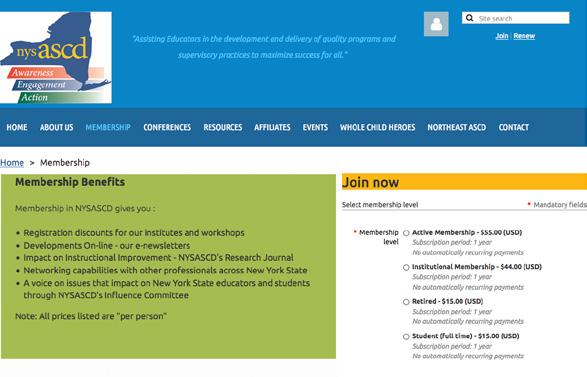
The Sorting Hat: Unpacking Cognition for Practical Classroom Applications
Robert K. Greenleaf, Elaine M. Millen, and LaVonna Roth

Dr. Robert K. Greenleaf was formerly a professional development specialist at Brown University. Having taught in all grades, he has 45 years of experience in education ranging from superintendent, assistant superintendent, elementary principal, teacher, special education assistant, playground supervisor and even bus driver! He served as an adjunct professor and in other capacities at Thomas College, SNHU and USNH-GSC. As President of Greenleaf Learning Bob specializes in strategies for understanding behaviors, learning and cognition. He is the author of 8 instructional books on Movies of the Mind, the Neuroscience of Learning, Microformative Assessments and Engaging Students and has traveled the world conducting Brain & Learning Institutes. Dr. Bob holds a doctorate in education from Vanderbilt University, a M.Ed in Education and a Bachelor’s degree in psychology. bob@greenleaflearning.com
Neuroscience studies were never designed to address learning directly—so why the rising interest in educational applications? Neuroscience research tends to focus on areas like depression, genetics, neuroplasticity after trauma, neurodegenerative diseases, and brain mapping. References to education are often interpretive bridges built from this research. While this is a worthwhile endeavor, few findings speak directly to teaching and learning.
Yet, without becoming neuroscientists, we can adopt research-aligned practices that stimulate “minds-on” engagement. These go well beyond educational fads. The real test? Identifying concepts that align with (1) cognitive psychology, (2) neuroscience, and (3) practical classroom experience. This trio is our Sorting Hat for evaluating learning strategies.
“How
do I teach this?” is not the same as “How will they learn this?”
“How do I teach this?” is not the same as “How will they learn this?” Beyond grabbing attention and managing behavior, understanding how students process, remember, and apply information is essential. Below are five evidence-aligned, classroom-ready strategies.

Elaine M. Millen, M.Ed.
C.A.G.S.., has over 50 years of experience in education as a teacher, principal, director of special education, curriculum director and assistant superintendent of schools. She has taught at both the undergraduate and graduate levels in both pubic and private institutions. As an educational consultant and instructional coach, she has worked with hundreds of school leaders across the country in areas related to leadership, instructional coaching, student engagement, and helping schools design structures and systems to meet 21st Century learner needs. She was part of the Northeast Regional Laboratory at Brown University and was a consultant to the secondary reform project. Elaine has written several articles on transforming professional learning opportunities for teachers, students and leaders. Elaine.millen90@gmail.com
NEURO-MOVE #1: CONTEXT
Unpacking Context: Context the setting or circumstance surrounding a concept—is foundational for meaning-making. Everything we perceive, think, or do responds to what we interpret from our environment. This makes the educator’s role in shaping context vital. Context builds meaning, which in turn supports memory, perspective-shifting, and knowledge transfer. For example, a logger and a birdwatcher perceive the same tree differently based on context.
Context is different from a lesson objective. It frames the lesson by providing setting, relevance, and relational cues. Context deepens buy-in, enhances comprehension, and promotes active memory processing. Teachers typically know the broader context; students often do not. Without it, learners feel disconnected and may complete tasks with low retention or transferability.
When learning connects to prior knowledge, the brain processes it more deeply. Without this anchoring, new material can overwhelm working memory, leaving students lost. Begin units by brainstorming existing knowledge and framing essential questions to anchor future learning.
Takeaway: Frame lessons and units explicitly. Ask: “How can I make the context clear so learners can build upon it meaningfully?”
NEURO-MOVE #2: CLASSIFICATION
Unpacking Classification: From birth, the brain seeks patterns and structure to create meaning. When something is unfamiliar, we instinctively sort it based on what is similar or different. These classification habits evolve into more complex tasks like forming arguments, weighing pros and cons, and analyzing perspectives.
From early childhood onward, we sort and group to understand. Toddlers sort by color or shape. Adolescents compare political systems or historical movements. Teaching that aligns with this innate tendency boosts comprehension.
Instructional Design Tip: Before diving into specific content (e.g., the American Revolution), frame the lesson around big ideas like conflict. This encourages students to connect historical content to personal and current events, fostering engagement.
Reclassifying: After initial sorting, students should be invited to reconsider their categories. This deepens thinking, expands connections, and encourages transfer to other subjects or real-life contexts.
Takeaway: Embed opportunities for students to classify and reclassify content to enhance organization, problemsolving, and application.
NEURO-MOVE #3: DUAL CODING
Unpacking Dual Coding: Visuals and language work better together. Consider this: Close your eyes and picture your living room. Now, count the windows. Next, recall the type of locks. You are using visual memory—an automatic process the brain relies on.
We learn through imagery long before we learn letters. Visual processing is vital at all learning stages, yet it is often underused in schools.
Instructional Design Tip: Present verbal and visual content simultaneously and explicitly. For example, place photos of Lincoln and Churchill side by side. List similarities between them in the center; differences around

LaVonna Roth, M.A.T., M.S.Ed. is an engaging and interactive keynote speaker, consultant, educator, and mom, LaVonna bridges her passion for how the brain learns with identifying how every individual S.H.I.N.E.s with their mindset and socialemotional well-being. She leads a small business where her and her team boost schools in embodying a Human-Focused Culture. A culture where we put those doing the work at the heart of the impact desired. How? By supporting schools in harnessing the S.H.I.N.E. framework, increasing psychological safety, & building the foundation based on the brain sciences. S.H.I.N.E. is the secret to a work environment where all want to be! LaVonna has 3 degrees, is the author of 8 books, and has worked with organizations in the U.S./Canada, Europe, South America, and the Middle East.
the edges. This encourages deliberate mental connections.
Creative Strategy: Give students a central image related to the content. Have them annotate it with keywords, timelines, symbols, or personal references. This builds clarity and supports retention.
Alternative Strategy: Show an image and ask students to generate vocabulary and emotions it evokes. This reinforces language, perspective, and critical thinking.
Research Insight: In a study by Sadoski, Goetz & Kangiser (1988), students recalled paragraphs with high emotional and imagery ratings significantly better than those they rated as important.
Emotional Tags and Dominant Emotions: Each student brings emotional “tags” to school—topics and experiences they find personally meaningful. These influence their willingness to engage. Dominant emotions— formed over time—can shape a student’s general attitude toward learning.
Emotions are not just byproducts of experience—they are learning drivers.
Takeaway: Use dual coding intentionally, not just illustratively. Interweaving visuals and words strengthens memory and transfer.
NEURO-MOVE #4: EMOTION
Unpacking Emotion: Emotions are not just byproducts of experience—they are learning drivers. Picture seeing a student’s parent walk toward you. Emotional memories of past interactions immediately surface. This emotional tagging shapes how you respond.
Emotions linked to learning can foster engagement or withdrawal. It’s not about students “liking” the lesson but whether the material has meaning for them.
Dr. Patrick Levitt (2010) puts it bluntly: “Emotion IS learning... period.”*
Takeaway: Know your students’ emotional landscapes. Tie learning to meaningful, positive emotional experiences to boost attention, memory, and motivation.
NEURO-MOVE #5: SOCIAL INTERACTION
Unpacking Social Interaction: The human brain is wired for social connection. Consider the motivation behind regular group fitness classes: shared purpose, mutual support, and social accountability matter more than convenience.
Instructional Design Tip: Teach and model competent interaction. Social skills
are learned, not innate. Focus on three core components:
• Purposeful Connection – Ensure students understand the purpose of collaboration.
• Organized Thinking – Teach students how to prepare their ideas for sharing.
• Collaborative Skills – Build classroom communities rooted in respect and productive exchange.
Post-Pandemic Insight: Remote learning diminished social development. Online tools cannot fully replicate face-to-face collaboration. Rebuilding these interactions is essential.
Takeaway: Purposeful social interaction enhances learning, engagement, and socialemotional well-being.
Moving Toward Tomorrow
• Context: Frame units around big ideas to provide purpose and direction.
• Classification: Support students in comparing and organizing concepts.
• Dual Coding: Blend visual and verbal information for deep learning.
• Emotion: Leverage personal emotional connections to drive motivation.
• Social Interaction: Provide space for authentic, purposeful dialogue.
If active, minds-on learning is the goal, these
neuro-moves are essential. Too often, students work for a grade—not for understanding. We must design learning that invites personal investment and real-world relevance.
For more strategies and tools, visit www. greenleaflearning.com.
REFERENCES
Given, Barbara (2000). Teaching to the Brain’s Natural Learning Systems, ASCD.
Greenleaf, Robert (2005). Creating Mindsets: Movies of the Mind. Greenleaf-Papanek Publications.
Greenleaf, Robert & Millen, Elaine (2023). When Teaching Mirrors Learning: The DNA of Learning Blueprint. www. greenleaflearning.com
Greenleaf, Robert & Wells-Papanek, Doris (2005). Memory, Recall, the Brain & Learning. Greenleaf-Papanek Publications.
Levitt, Patrick (2010). Lecture at R.I. Hospital. W.M. Keck Provost Professor, USC Keck School of Medicine.
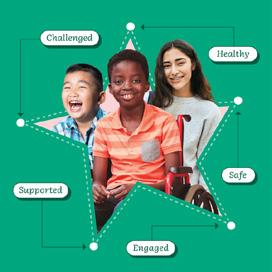
The Whole Child Award, launched in 2007, recognizes schools for not only educating the whole child, but for having success in creating students who are knowledgeable, emotionally and physically healthy, engaged in an inclusive learning environment, and prepared to become lifelong learners.
This award focuses on five tenets: Health, Safety, Engagement, Support, and the level of Challenge, and recognizes schools that have changed the focus from a narrow academic vision to one that promotes the development of the whole child.
This year, we congratulate Algonquin Middle School from the Averill Park Central School District.
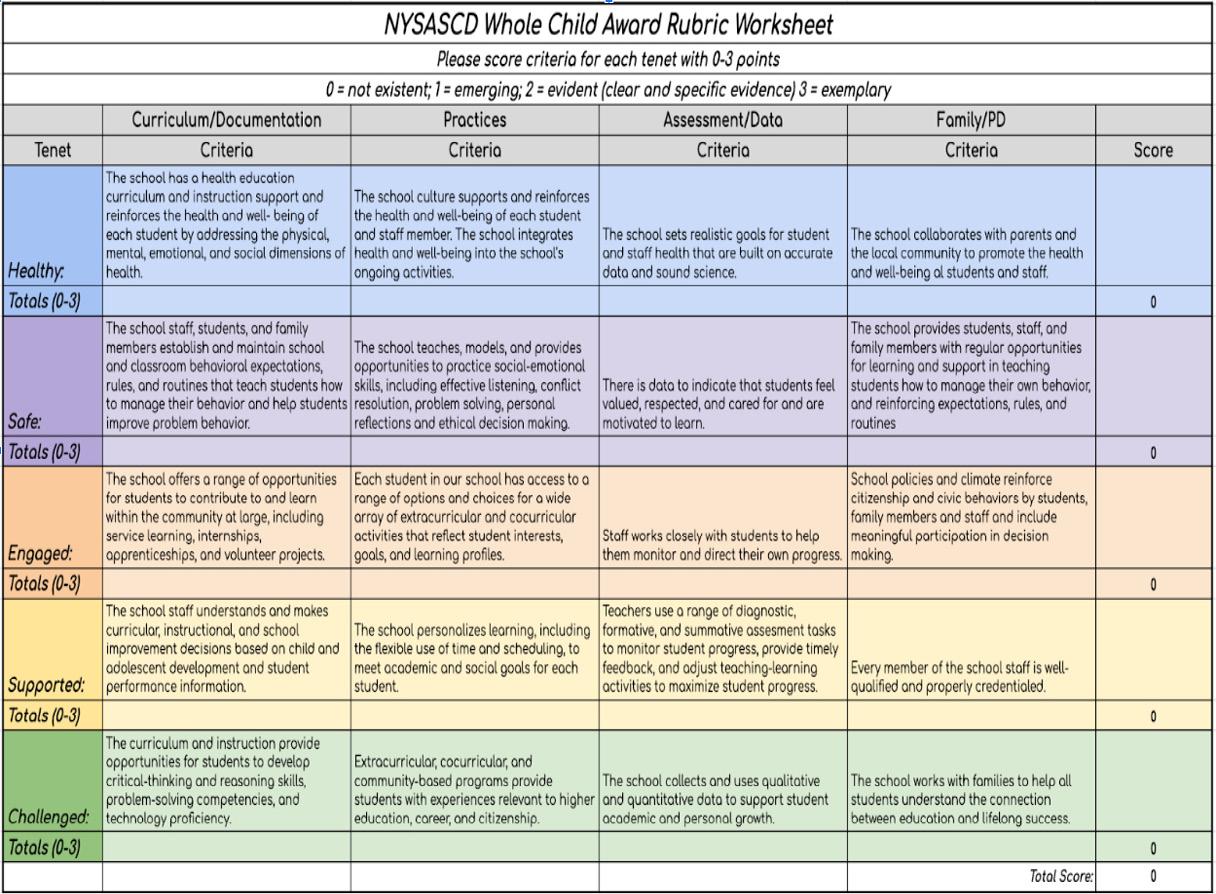
At Algonquin Middle School, Every Student Matters: A Look Inside the Warrior Way
Brian Kesler
At Algonquin Middle School (AMS), which is part of the Averill Park Central School District, school is more than a place to learn—it is a community built on support, respect, and opportunity. Students at AMS feel supported, challenged, and connected every single day. From advanced academics and mental health services to after-school clubs and field trips that extend the learning, AMS is committed to helping every student grow academically, socially, and emotionally.
Support Every Step of the Way
At AMS, every student is closely monitored for academic growth. Thanks to the school’s participation in the NYSED Middle School RtI Demonstration Project, student learning needs are identified early and targeted help is provided quickly. Students take part in universal screenings three times a year to measure reading and math skills. In addition to this data, teachers use the information from Common Formative Assessments, which are administered four times a year, to designate specific tiered support that ensures students get the help they need.
Students also benefit from structured time built into the day for extra support. Throughout the week, students participate in Morning Meetings or receive support during an Access period to connect with teachers, get homework help, or dive deeper into a tricky subject. Teachers utilize this formative and qualitative information to adjust their instruction and meet students where they are. As a result, ELA proficiency has jumped from 38% in 2013 to 55% in 2024, and math from 29% to 62%.
High Expectations, Real Opportunities
AMS doesn’t believe in waiting until high school to challenge students and prepare them for the future. Middle schoolers have a chance to earn high school credits in subjects like Regents Earth Science, Algebra, and Geometry, plus Design and Drawing for Production. These rigorous course offerings give students access to demanding content, which is balanced with constant academic support.
There’s also a wide range of electives in eighth grade, from Journalism and Studio Art to Current Global Issues and Computer Coding. To help students develop career
awareness, all eighth graders take a College and Career Pathways course. Classes like Entrepreneur Access and a Shark Tank Project give them a taste of business planning and develop their public speaking skills. Sixth graders even get to explore health careers with Medical Explorations, a hands-on, lab-based class. Students in sixth grade also participate in Keys to Success, a class focused on organizational skills, study habits, and socialemotional learning.
Learning doesn’t stop at the classroom door at AMS. Students can join any of 25 different clubs, including MathCounts, Chess Club, Book Club, E-Sports, Science Club, Girls Adventures in Math, Odyssey of the Mind, and Robotics—just to name a few.
Athletics are strong too, with 25% of students participating in fall sports. And the Band, Chorus, and Orchestra programs are booming with more than 600 students involved altogether. The spring musical alone involves more than 50 students in a celebration of music, performance, and teamwork. Each event showcases students’ talents beyond academics.
The school also hosts fun, inclusive events throughout the year like Holiday Happenings, the Winter Luau, Friday Fun Night, and Halloween Spooktacular. And don’t miss Algonquin’s Got Talent, which raised $1,500 for the school’s food pantry!
SEL and Mental Health: A Priority, Not an Add-On
Middle school can be tough. To provide the support students need to build resiliency, AMS uses the Second Step program, where students participate in 40 lessons across grades six through eight that help build empathy, communication, and decision-making skills. These skills are honed during daily Morning Meetings and the monthly Team Building Tuesdays. AMS’s commitment to emotional development is evident during its all-day Wellness Day, where students get to choose from a variety of activities that help them feel safe, seen, and supported.
The outside community partnerships live within the school to support students and their families. AMS offers in-school mental health counseling thanks to a partnership with the Rensselaer County Mental Health Clinic. There’s also a dedicated counselor from the Student Assistance Program for prevention, mentoring, and family support.
Regular check-ins like the Minute Meeting Survey (done four times a year) and school climate surveys help staff stay in tune with how students are doing—and respond when something’s off.
The Warrior Way: Respect,
Effort, and Action
Everything at AMS ties back to three simple but powerful values: Respect, Effort,
and Action. Known as The Warrior Way, these character principles are woven into daily life—celebrated at Quarterly Assemblies, modeled by staff, and reinforced through Executive Functioning classes and the Advisory program.
teachers, strong academic supports, amazing enrichment opportunities, and a caring school culture, AMS is helping every student shine— inside and outside the classroom.
This isn’t just about being good students—it’s about becoming kind, responsible, capable people.
This isn’t just about being good students—it’s about becoming kind, responsible, capable people.
Whether through academic innovation, SEL programming, family partnership, or community connection, AMS continues to raise the bar for what middle school can be. If a student enjoys coding, music, math, art, or sports, there is something for them at Algonquin Middle School. With certified
nysascd on
Whether it’s a sixth grader just starting out or an eighth grader preparing for high school, every Warrior walks a path built on respect, effort, and action—and that path leads to confidence, success, and a love for learning.
From strong academics to real-world learning, from mental health supports to family outreach, AMS is truly committed to every student’s growth.
The Warrior Way is more than a motto— it’s how Algonquin builds a community where kids thrive.
Social Media



nysascd
Partnerships Click each logo to learn more.
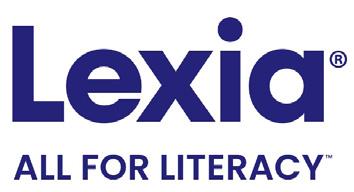

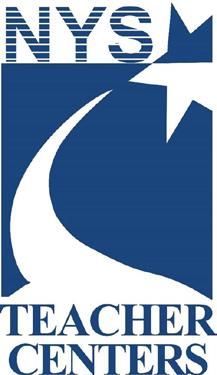
Lexia From acceleration, to intervention, to English Language Development, to assessment and professional learning, Lexia solutions can be used together or individually to meet all structured literacy needs for any student.
PLC Associates PLC Associates is completely committed to working with schools and organizations to achieve results, simply stated. We will stay with you and provide our “wraparound support” in order to get to the target outcomes each school and district designates. The result – we help you actually achieve your student achievement and performance goals. The company has developed numerous proprietary tools © and methodologies used successfully by schools.
New York State Teacher Centers From the Lighthouse in Montauk to the Adirondack Mountains to Niagara Falls, the NYSTC Network is a vibrant collaborative public organization that provides professional learning opportunities for educators. With 125 Teacher Centers and 7 regional networks, the NYSTC Network meets the needs of our diverse student population living in an ever-changing global environment. For more information, or to determine which Center is yours, visit www. nysteachercenters.org
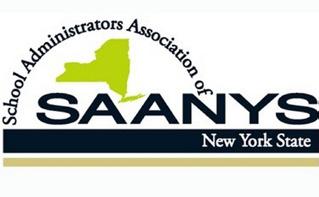
SAANYS - the School Administrators Association of New York State SAANYS has a long history of supporting New York’s public school leaders and their communities. Their mission is to provide direction, service, and support to their membership in their efforts to improve the quality of education and leadership in New York State schools.

ASCD Connect the dots to your child’s success with the ASCD Whole Child approach to education.
NYSASCD
Over 60 Years of Service to New York State Educators
1941-2024
NYSASCD has provided over 60 years of service under the capable leadership of the following Presidents:
Lance Hunnicut
Fred Ambellan
Ethel Huggard
Lillian Wilcox
Ernest Weinrich
Amy Christ
William Bristow
Bernard Kinsella
Grace Gates
Joseph Leese
Charles Shapp
Gerald Cleveland
Mark Atkinson
Ward Satterlee
Lilian Brooks
John Owens
Dorthy Foley
Anthony Deuilio
Tim Melchoir
Arlene Soifer
Mildred Whittaker
Lawrence Finkel
David Manly
George Jeffers
George McInerney
Thomas Schottman
Helen Rice
Albert Eichel
Conrad Toepher, Jr.
Peter Incalacaterra
Albert Eichel
Robert Brellis
James Beane
Thomas Curtis
Marcia Knoll
Don Harkness
Nick Vitalo
Florence Seldin
Donna Moss
Lynn Richbart
John Glynn
Robert Plaia
Robert Schneider
John Cooper
Diane Kilfoile
Diane Cornell
Marilyn Zaretsky
John Gangemi
Sandra Voigt
Mary Ellen Freeley
Jan Hammond
Linda Quinn
James Collins
Lynn Macan
Judy Morgan
John Bell
Judy Morgan
Brian Kesel
Timothy Eagen
Ted Fulton
Mary Loesing
